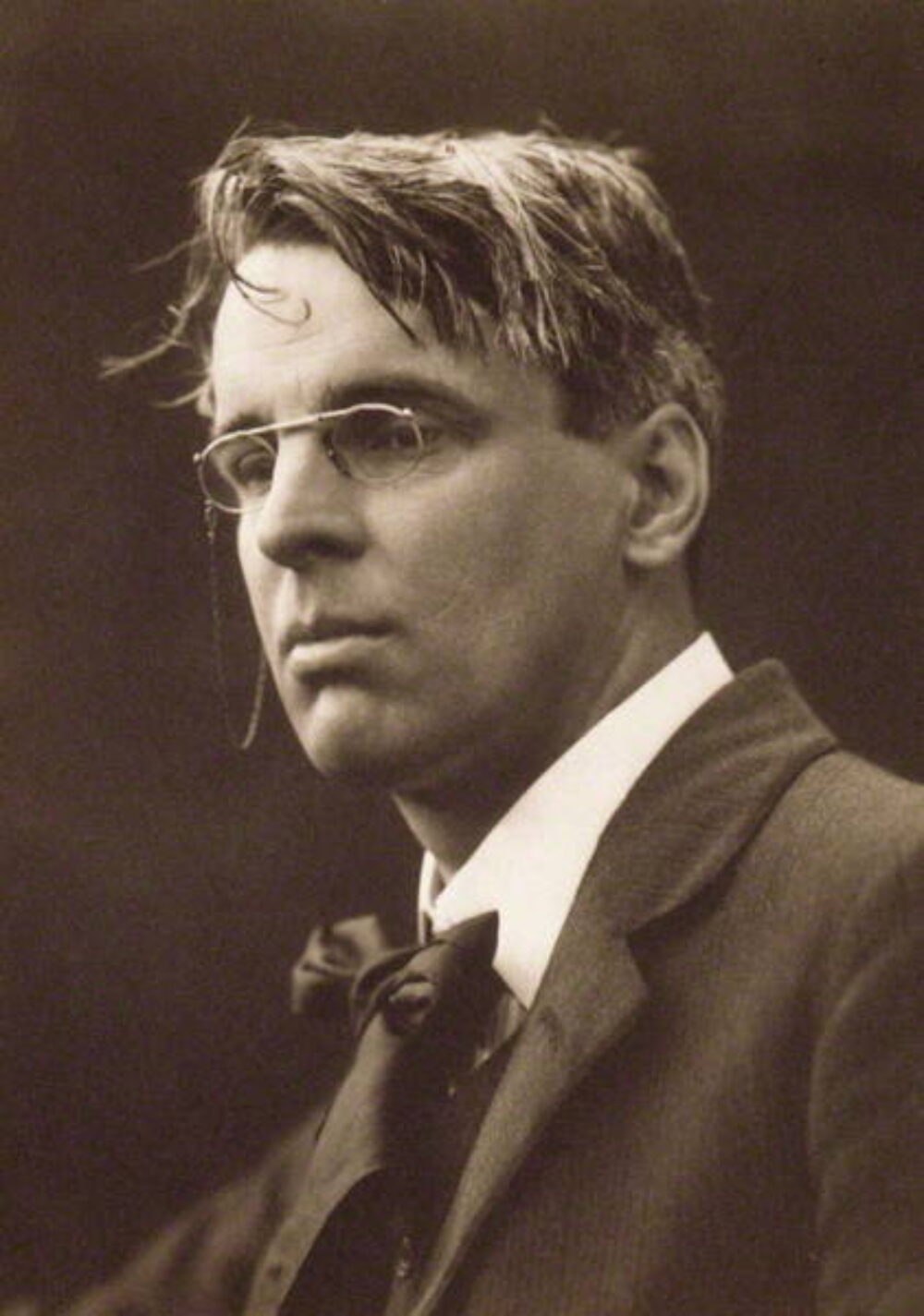William Butler Yeats, the Nobel Prize winning Irish poet and playwright died in France in January 1939. The renowned poet had died at the Hôtel Idéal Beauséjoure, Cap-Martin while wintering in the South of France. Calls in Ireland for a State Funeral and a tomb in St Patrick's Cathedral were countered by Yeats' own wishes. In conversation with his wife, Yeats expressed his wish to be buried in France if he died there but to be returned to Sligo at a later date. "If I die bury me up there and then in a year's time when the newspapers have forgotten me, dig me up and plant me in Sligo." (R.F. Foster 'W.B. Yeats: A Life', Volume II). The outbreak of World War II in September 1939 ensured that no immediate plans would be made for Yeats' return to Sligo.
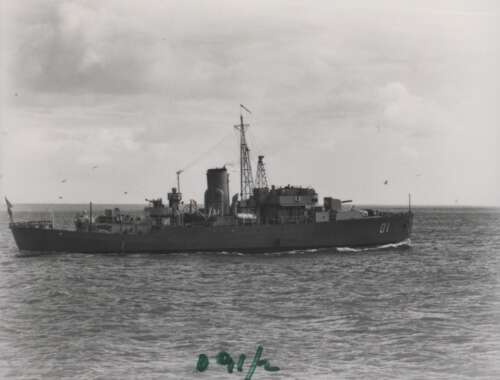
In 1946 a permanent Naval Service was established in Ireland and three corvettes, L.E. Macha (formerly known as H.M.S. Borage), L.E. Maev (formerly H.M.S. Oxlip) and L.E. Cliona (formerly H.M.S. Bellworth) were purchased from the British Admiralty. These corvettes were capable of seagoing voyages and in 1948 when plans were made for the repatriation of Yeats' remains the L.E. Macha was pressed into service.
Eastern Command Film Crew
In addition to her own crew the L.E. Macha also carried a film crew from the Eastern Command and a photographer, Lt Jack Millar. To view footage of this historic voyage please click on the image below.

Please accept cookies to view this content.
Accept cookiesWritten Account of the Voyage
Commander Thomas McKenna, a senior Naval officer travelled with the L.E. Macha and sent a series of letters back to Captain H.J. Jerome, Commanding Officer of the Naval Service. A full copy of his correspondence, recounting the weather conditions, the Macha's reception at Gibraltar and Nice and daily life at sea, can be viewed below.

THE L.E. MACHA AT SEA

Correspondence Cdr McKenna

Correspondence Cdr McKenna

Correspondence Cdr McKenna

Correspondence Cdr McKenna

Correspondence Cdr McKenna

Correspondence Cdr McKenna

Correspondence Cdr McKenna

Correspondence Cdr McKenna

Correspondence Cdr McKenna
The L.E. Macha at Sea
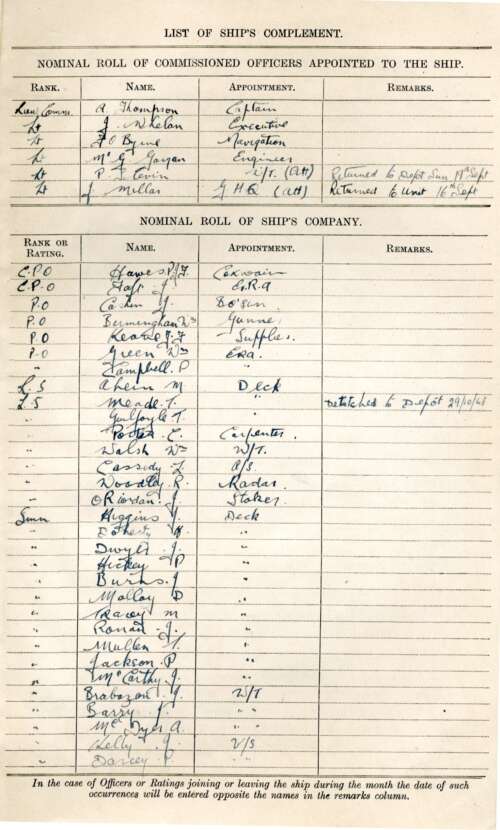
The L.E. Macha departed Carlisle Pier, Dun Laoghaire 25th August 1948 with the first leg of the trip from Dun Laoghaire to Gibraltar taking six days. Commander Thomas McKenna reported that weather conditions were difficult at first with seasickness posing a particular problem. However once the weather improved the crew were put to work painting the L.E. Macha to ensure she was fit for her first official visit.
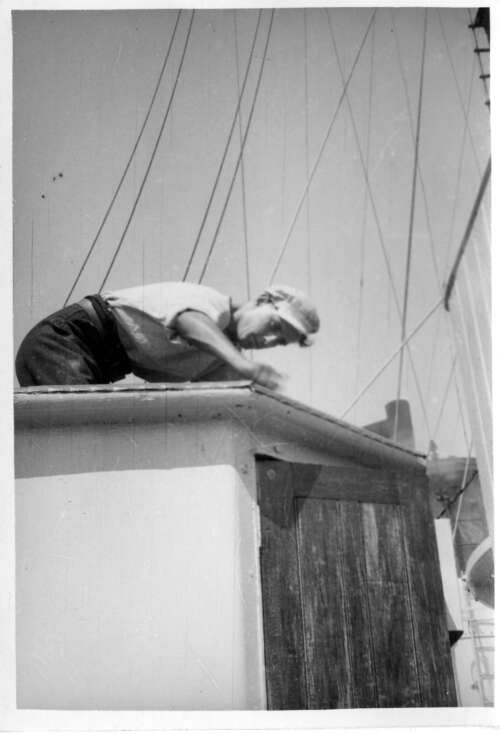
Gibraltar
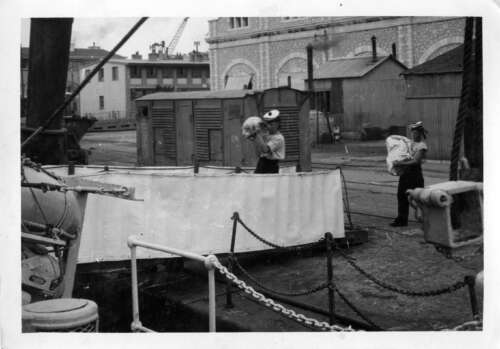
The L.E. Macha called to Gibraltar to refuel and resupply on the outward and homeward journeys. She was the first Irish vessel to berth there and the officers paid and received a number of visits from naval and civilian dignatories. These included Governor-General Anderson, Governor of Gibraltar; Rear-Admiral Brooking, the Royal Navy Flag Officer at Gibraltar; Archbishop Dr Fitzgerald, Bishop of Gibraltar and Mr Roberts, the American Consul based there.
A British destroyer, the H.M.S. Childers was in port and the British and Irish sailors exchanged visits. Tours of the 'Rock' were also organised for the men, leading Commander McKenna to comment 'The lads are in their element. The Irish half of the R.N. (Royal Navy) are taking them around the place.'

Group on board L.E. Macha on occasion of visit of His Lordship, Most Rev Dr Fitzgerald, Bishop of Gibraltar. Left to Right: Fr Devlin, Commander T. McKenna, His Lordship

Group including the officers of the H.M.S. Childers taken on board the L.E. Macha
Nice
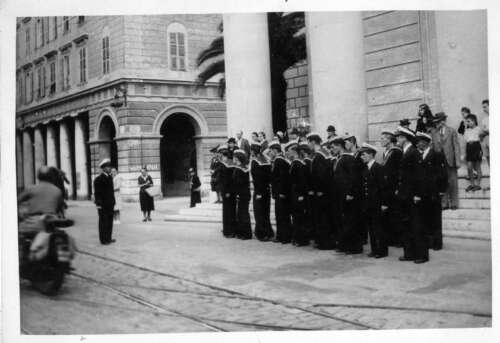
The L.E. Macha reached Nice on Saturday 4th September where Lieutenant Commander Thompson (Captain of the L.E. Macha) and Commander McKenna met with French officials and with Seán Murphy, Irish Ambassador to France.
On the following morning the crew, split into two watches, attended mass at 8am and 9am.
View further images of the Irish Naval Service in Nice.
Roquebrune
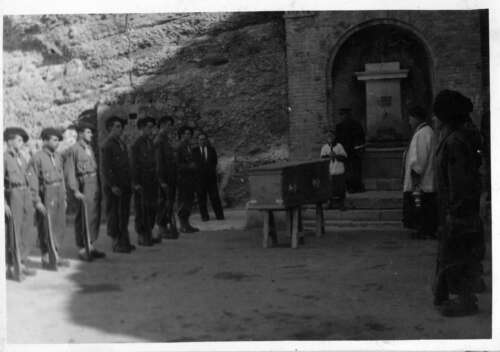
Yeats had been buried at Roquebrune cemetery, Mentone, overlooking the Mediterranean Sea. At 9.00am Monday 6th September, Ambassador Murphy and Commander McKenna travelled to Roquebrune to attend a religious ceremony before Yeats' remains were removed to Nice. A tricolour was placed on the coffin with a French military guard drawn up on either side and a local poet delivered an impassioned oration.
The funeral procession was met by an Irish Guard of Honour on the upper deck of the L.E. Macha, the band played the French and Irish national anthems and a Petty Officer provided a guard by the coffin, resting on arms reversed, until the L.E. Macha was out to sea.
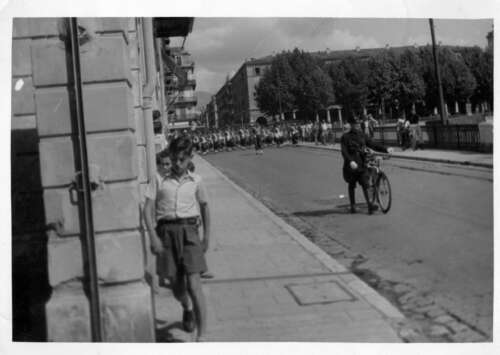
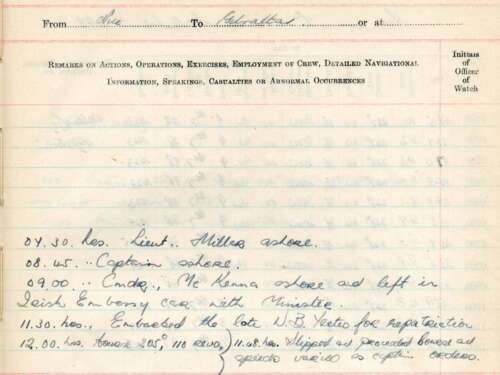
Arrival Home
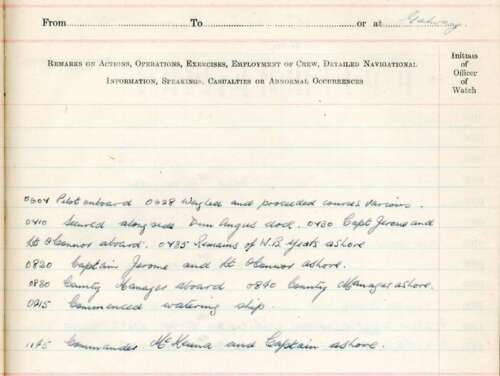
The L.E. Macha arrived in Galway 17th September 1948. Yeats' remains were disembarked and taken to Sligo. An Céad Cath, 1st Battalion based in Galway, provided a Guard of Honour at Sligo town before the funeral procession to Drumcliffe graveyard.
The L.E. Macha left Galway the following day for the Naval Dockyard at Haulbowline where she remained for the rest of September.

Guard of Honour from An Céad Cath at the Town Hall, Sligo, before the arrival of the Yeats' cortege

Scene at quayside at Galway before Yeats' coffin came ashore

Graveyard scene
Petty Officer Patrick Campbell
In March 2015 retired Petty Officer Patrick Campbell visited Military Archives to recount his memories of the L.E. Macha's notable first trip abroad. PO Campbell joined the Naval Service in September 1946 and served on board the L.E. Macha as Engine Room Artificer during her trip to Nice.
He had recently celebrated his 90th birthday and at his family's suggestion made contact with our office. We appreciate the assistance he gave us in identifying some of the images displayed in this exhibition. In particular however we appreciate his generosity in sharing his own photographs and his personal recollections with us. To listen to snippets of his interview please click below.
PO Campbell Interview

Certificate of Service for PO Patrick Campbell

Certificate of Service for PO Patrick Campbell

